by GardenLover | Apr 27, 2015 | Good eats
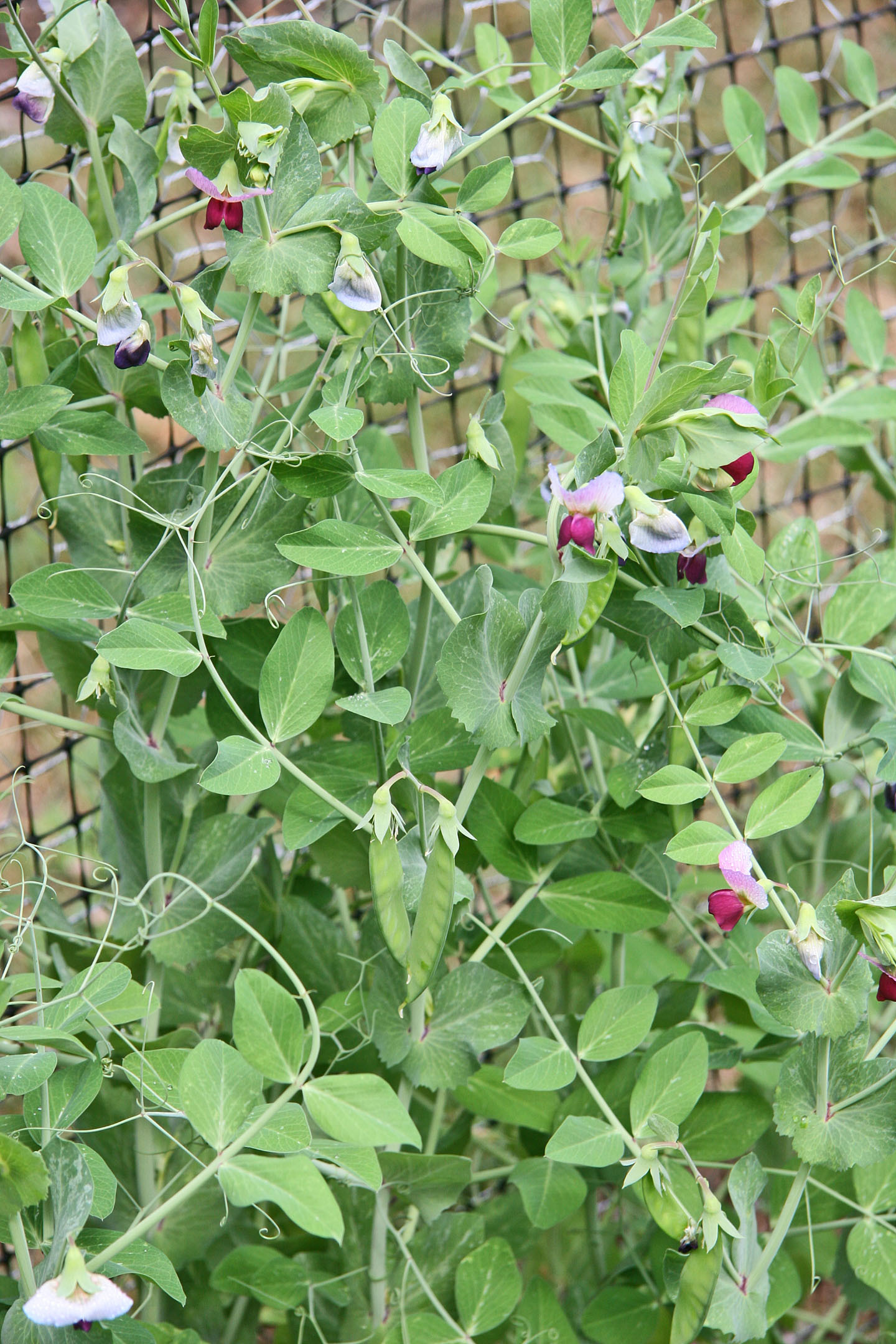
Dwarf Gray Sugar Snow Pea from Johnny’s Select Seeds
By Debra Knapke
“If you don’t like peas, it is probably because you have not had them fresh. It is the difference between reading a great book and reading the summary on the back” ― Lemony Snicket, Shouldn’t You Be in School?
My childhood perception of peas was based on peas out of a can: mushy, tasteless, army-green-colored excuse for food. My dad had a garden, but it was filled with tomatoes, carrots and lettuce. I’m betting peas were absent because they needed to be started early, and that just didn’t fit into my dad’s schedule.
In college I helped shuck peas and discovered their true flavor and texture. What a revelation.
I don’t plant peas every year, but when it fits in my schedule, peas are my food-harbingers of spring and early summer harvests. Their only competitor is asparagus, but that is a post for another day.
When do you plant peas? The rule of thumb is to plant them as early as you can work the soil starting in mid-March; St. Patrick’s Day is often given as a target date. My target range is closer to April 5th to April 15th which is when I can get into the garden. Right now my peas are about one to two inches tall.
I am impatient and don’t usually plant peas that need to mature and be shucked. I gravitate towards the snow and snap pea cultivars which are delicious in their raw state or when lightly sautéed or stir-fried. I confess to using frozen peas in recipes that call for the “seed” (pea) instead of the “fruit” (pea-pod). At a restaurant I had an elegant appetizer that consisted of a pea and mint pesto spread over baked ricotta. I have yet to replicate it; maybe this year.
Here is a simple side dish for freshly harvested snow or snap pea pods (all amounts are determined by what is available from your garden):
Pasta with Sautéed Peapods and Mint Pesto – for two
Pesto:
½ to ¾ c spearmint leaves and tender upper stems, rinsed and patted dry
3-4 TBS olive oil
1 clove garlic
In a food processor, combine the above ingredients.
3-4 cups peapods, rinsed and drained
1 TBS olive oil
Sauté the peapods in the olive oil until they are bright green and tender-crisp.
Toss the pesto and peapods with six to eight ounces of your favorite pasta. Garnish with toasted pine nuts or pistachios. You may wish to dress with one tablespoon of high quality olive oil. A fantastic olive oil – available online – is Lucero Meyer Lemon infused olive oil.
by GardenLover | Apr 22, 2015 | Special Topic
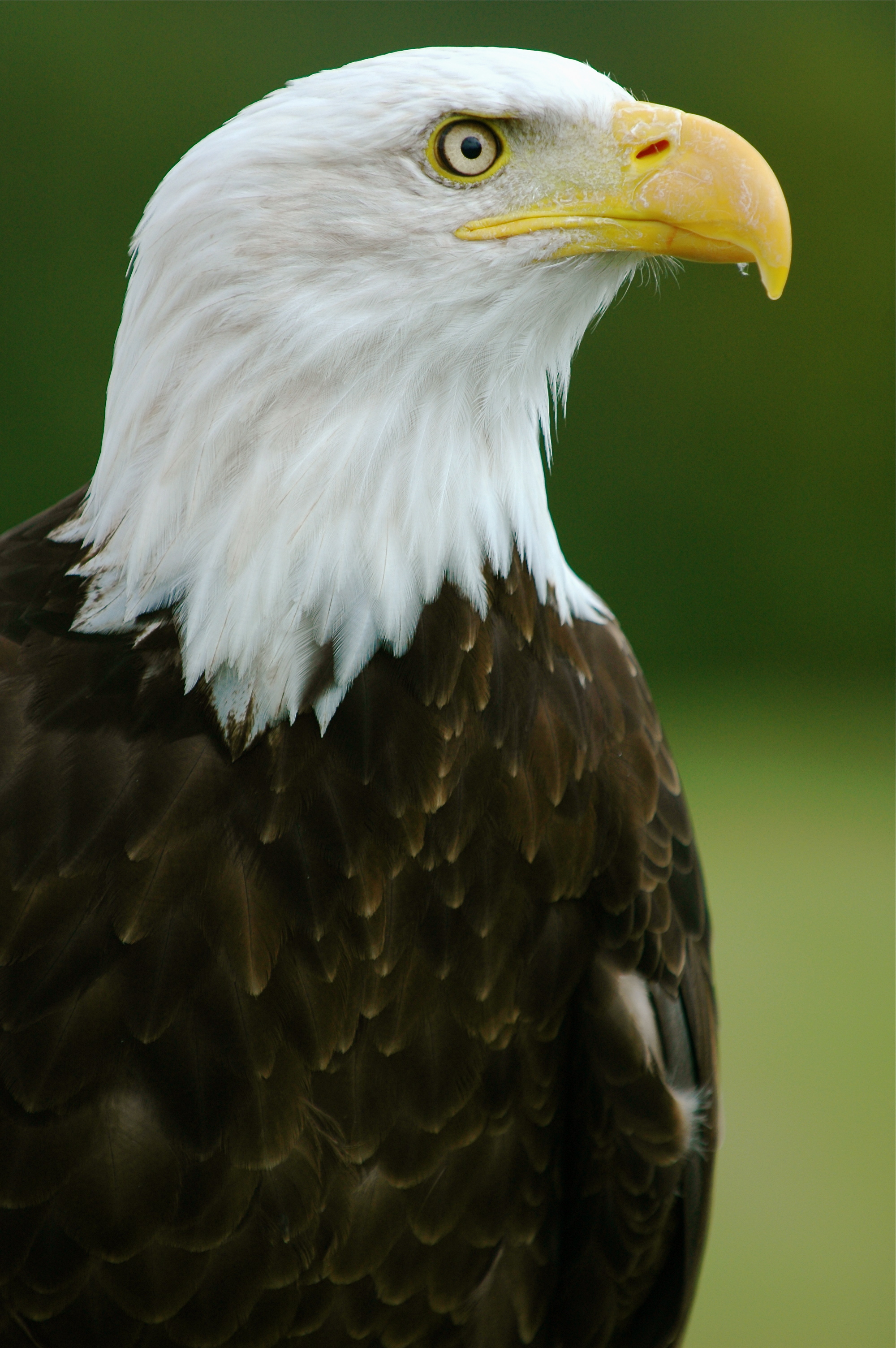 Bald eagles make history in borough of New York (headline in The Columbus Dispatch, Sunday April 19, 2015)
Bald eagles make history in borough of New York (headline in The Columbus Dispatch, Sunday April 19, 2015)
By Michael Leach
A pair of bald eagles is nesting in the Big Apple for the first time in over 200 years, according to the Associated Press story.
Rachel Carson would be so pleased with this news.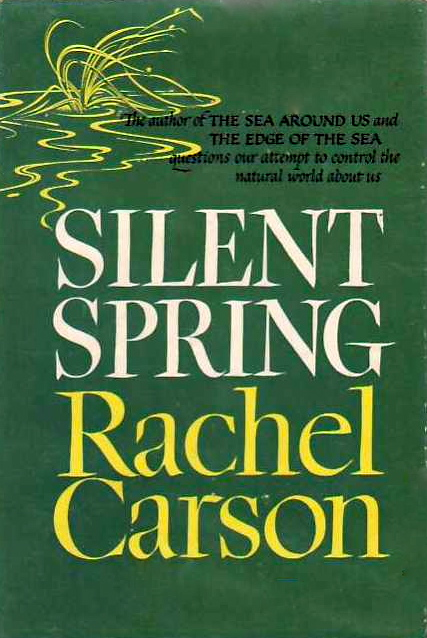
The eagles are incubating at least one egg on a treetop nest on the south shore of Staten Island, the city’s most suburban borough. Almost as amazing, bald eagles were spotted this year in the other four boroughs, which includes skyscraper-covered Manhattan.
Not bad considering the entire state had no eagles by the 1960s. Eagle populations across the country had declined so much that the national bird was declared an endangered species in 1978. Last year there were 254 nesting pairs in New York state.
AP reports the comeback is “…largely the result of environmental protections, particularly the ban of the pesticide DDT.”
Silent Spring, Carson’s 1962 book, documented DDT’s threats to eagles, other wildlife and people. I’ve always considered Carson, who died from cancer in 1964, as the silent spirit behind the first Earth Day in 1970. Her’s was hardly the only cry of alarm about what people were doing to the planet, but her passion, coupled with solid documentation, made it hard to ignore. Carson had a lonely vigil for a few years until popular thinking changed.
Our planet is still in danger from what seems a never-ending list of ills. But this report of eagles nesting in New York gives hope.
Thank you Rachel Carson.
Happy Earth Day.
by GardenLover | Apr 15, 2015 | Gardens to Drive
10 Don’t Miss Stops at the New Riverfront Location
By Teresa Woodard and Michael Leach
From fabulous table settings to window boxes to jaw-dropping display gardens, the Cincinnati Flower Show’s long awaited rebirth in a new venue won’t disappoint. The horticultural magic is as powerful as ever.
Set in white-tented splendor in a downtown riverfront park, the show blossoms between the wide, brown Ohio River and condo and office towers. The colorful oasis caused our jaws to drop more than once as we wandered Tuesday morning with wonderful hosts Kevin O’Dell and Marie Huenefeld. The event opens today and runs through Sunday, April 19.
Here are 10 things we suggest you see or do:
1. Cincinnati landmarks interpreted in elegant table settings. For instance, Fountain Square suggested in frothy, white orchids spilling from a multi-tier container. The focal point in this tent is a small dining table with crystal chandelier overhead that looks like a magazine cover shot.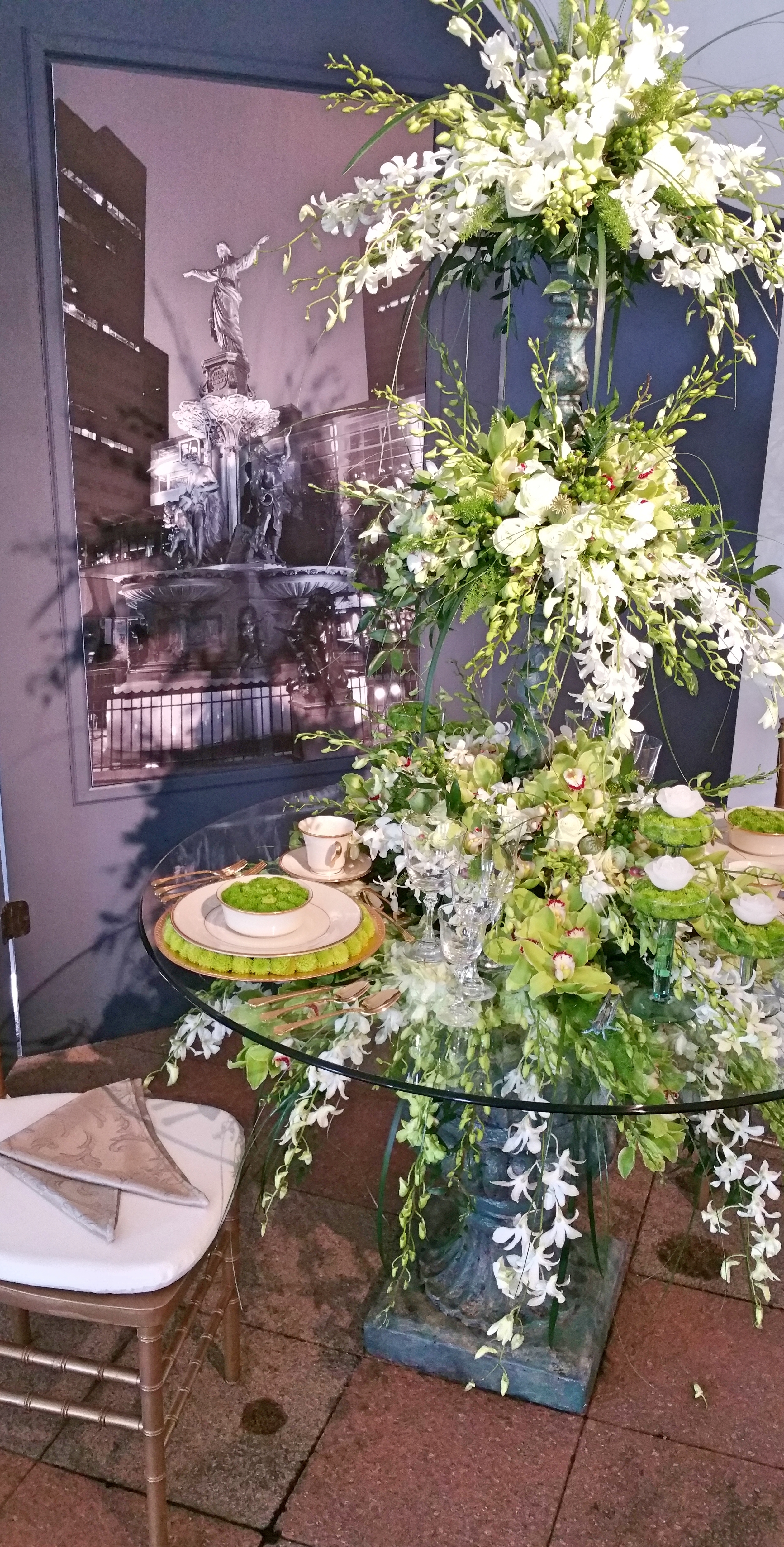
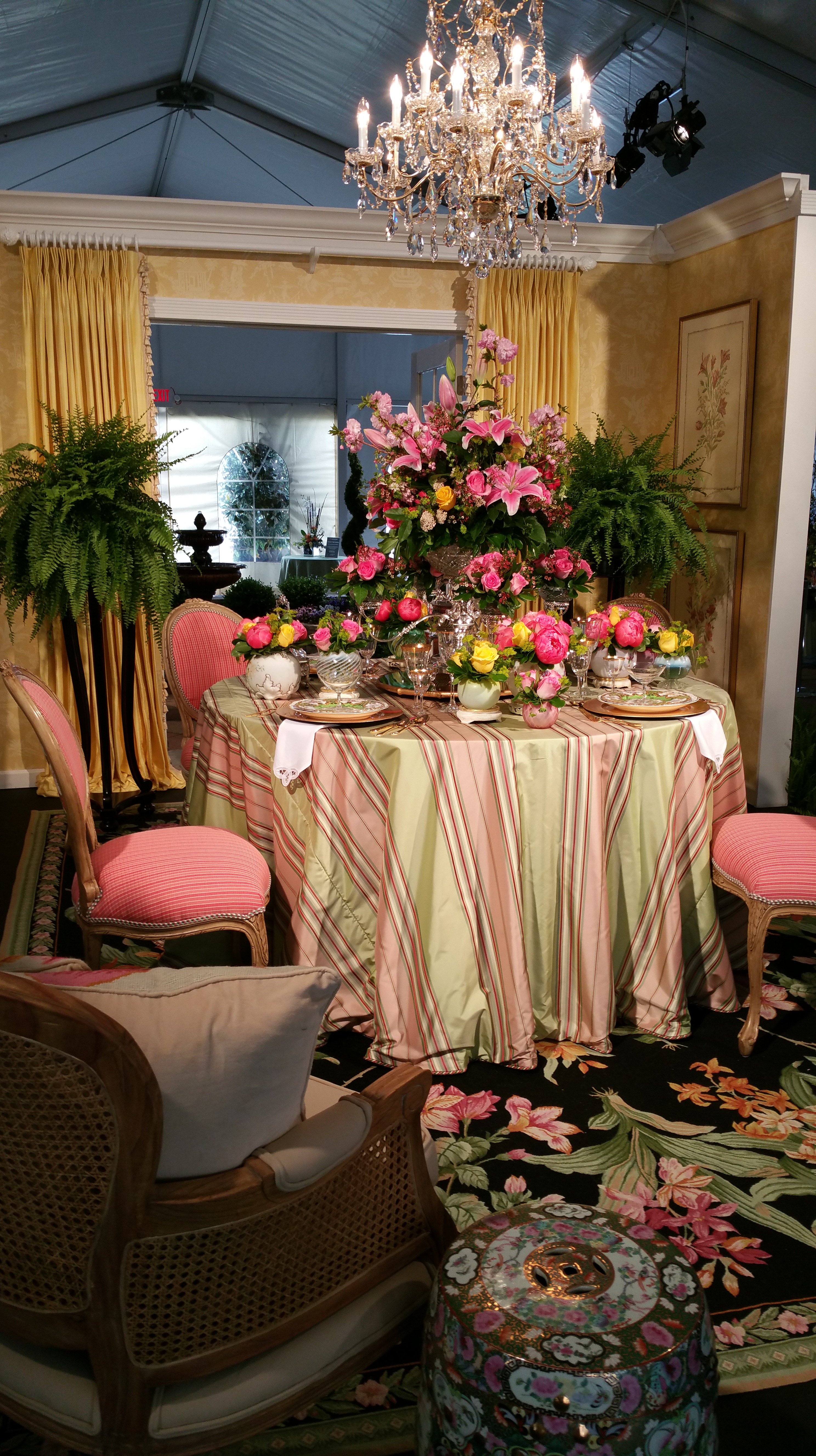
2. Less elaborate but no less appealing are the window boxes and hanging baskets played out in visually appealing — and practical — combos of plants. In the same vein are containers and miniature gardens.
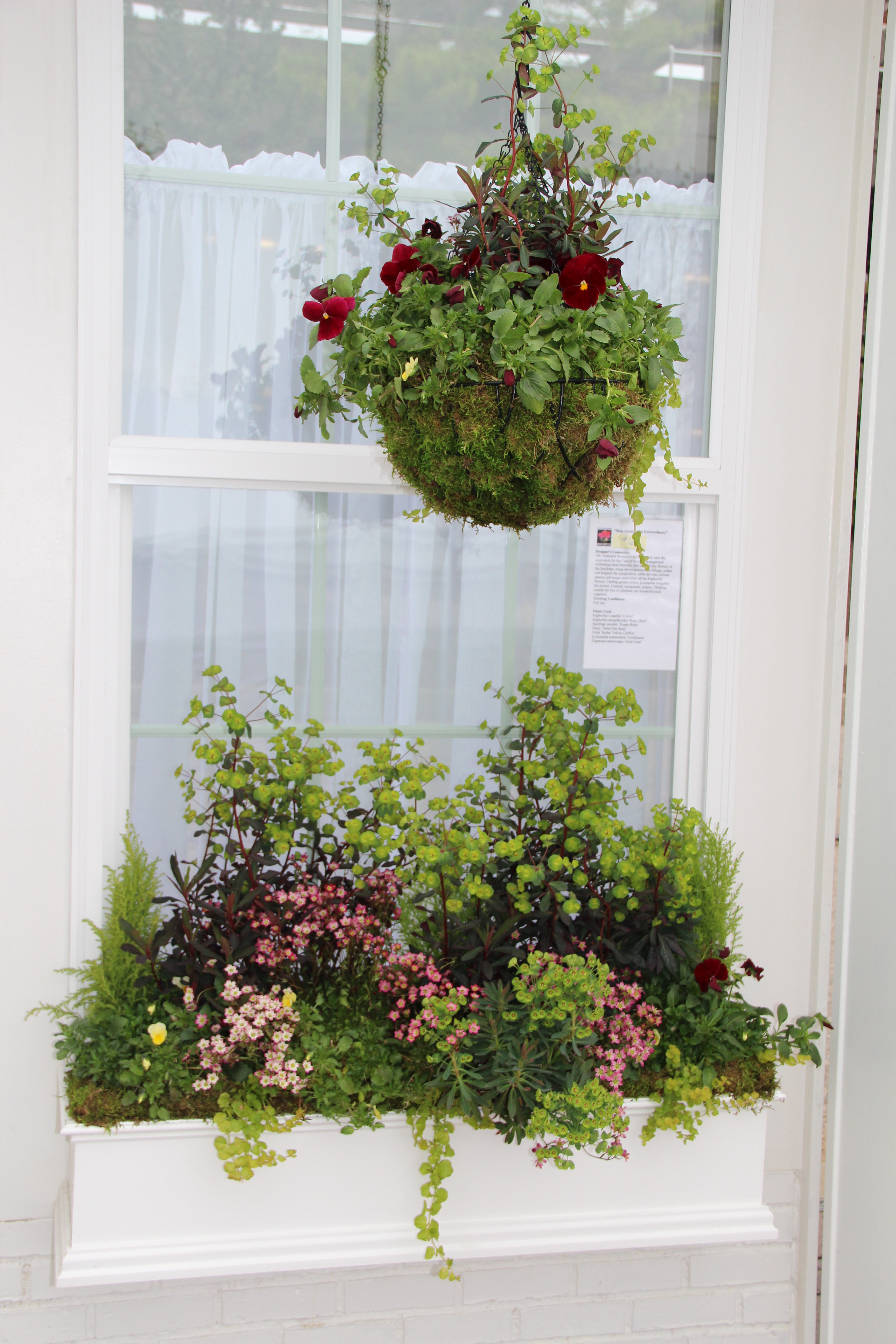
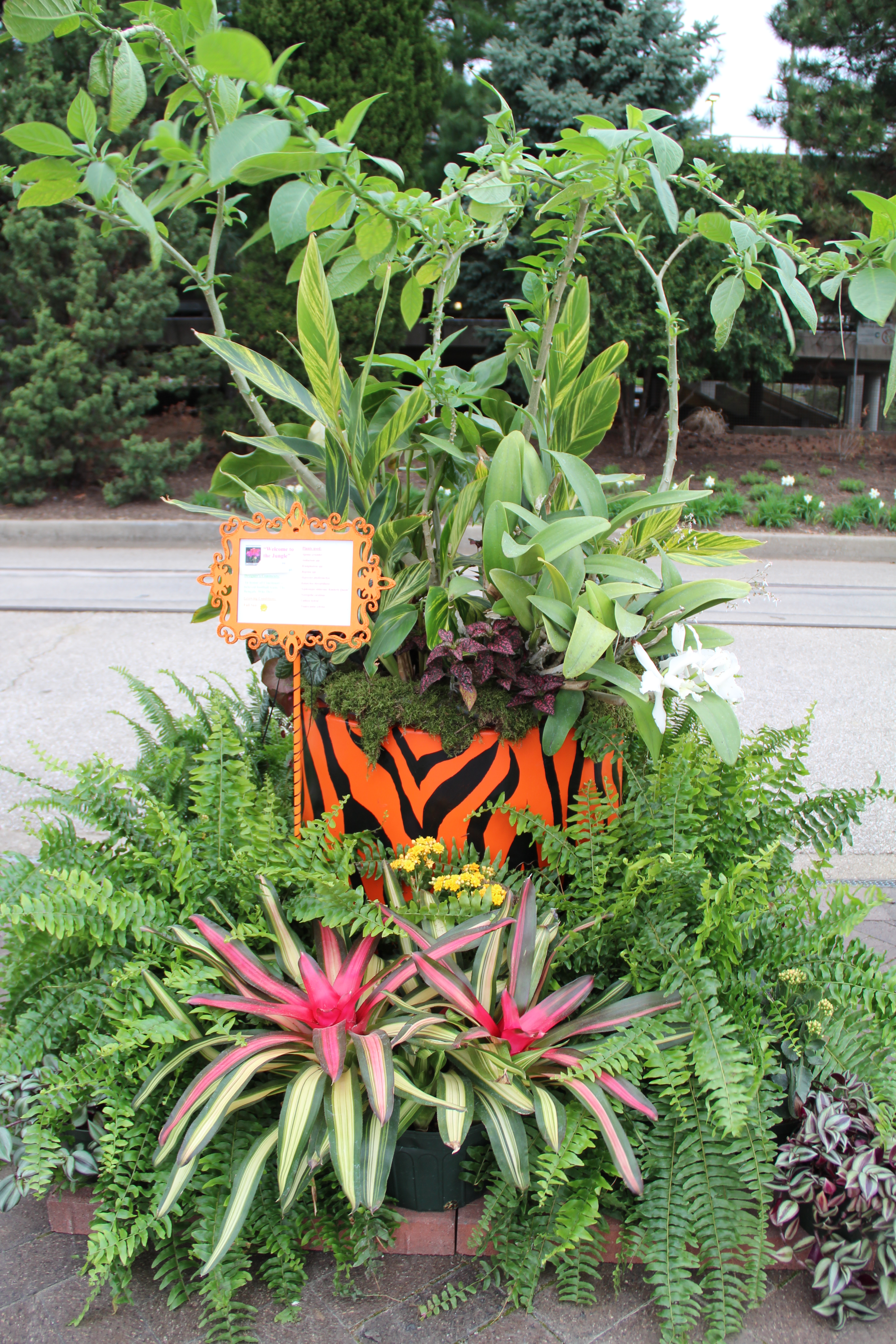
3. Shopping is back, too. Be sure to check out Vintage Revival’s jewelry from beloved china patterns.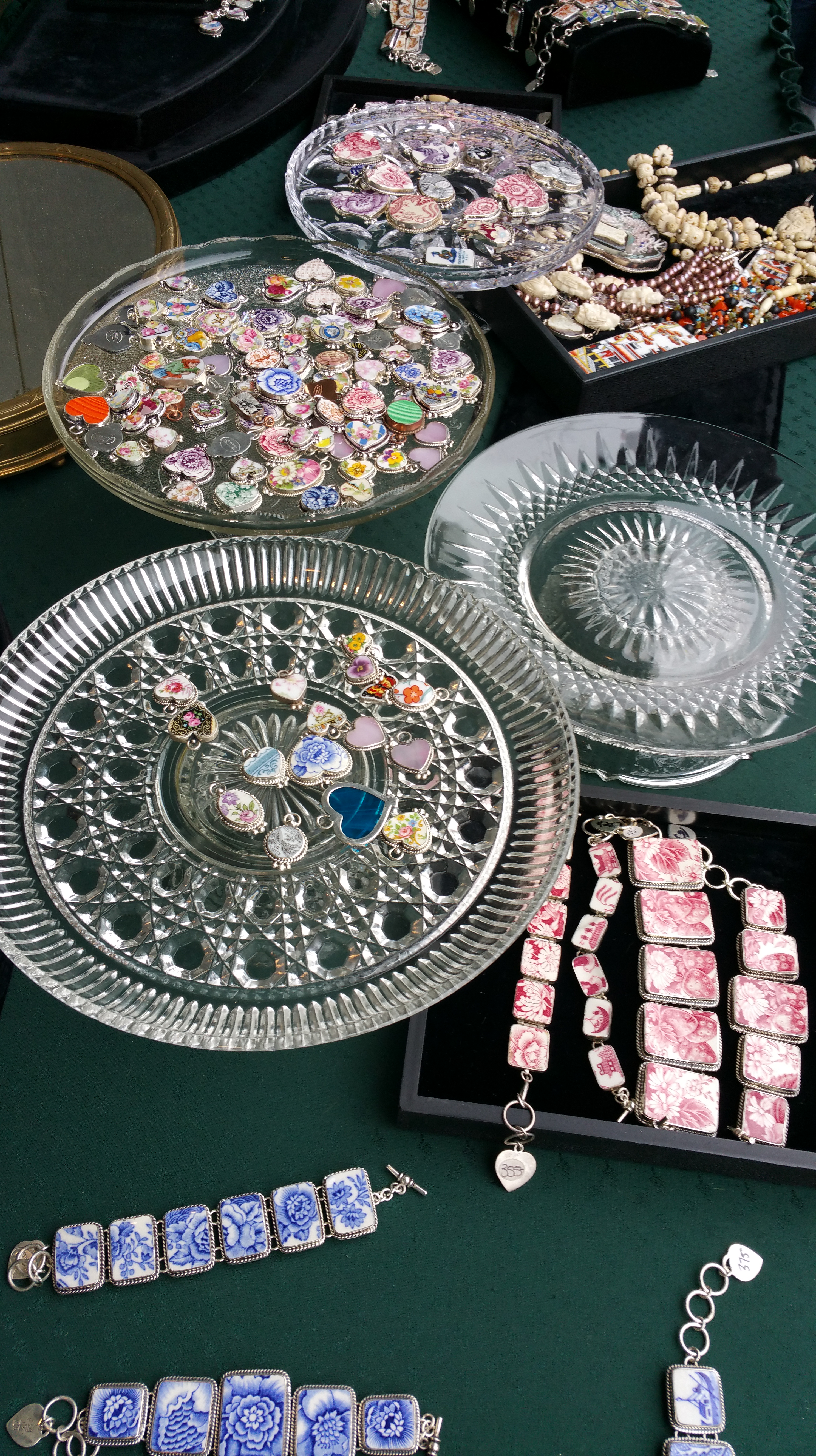
And of course you can buy plants of the most unusual nature and favorites, too.
We also spotted a different take on garden flamingos — a small stone for the body, and black wrought metal outlining legs, neck and head. Not for everyone, but they brought a smile.
4. Display gardens in all sizes and styles, from a penthouse terrace to a Findlay Market of yesteryear, complete with antique wooden boxes, bare, clear light bulbs and seedings in tiny peat pots. One tent features display gardens created by Cincinnati horticultural stops including world renown Spring Grove Cemetery, which shows off some of the plants it has introduced to the horticultural market.
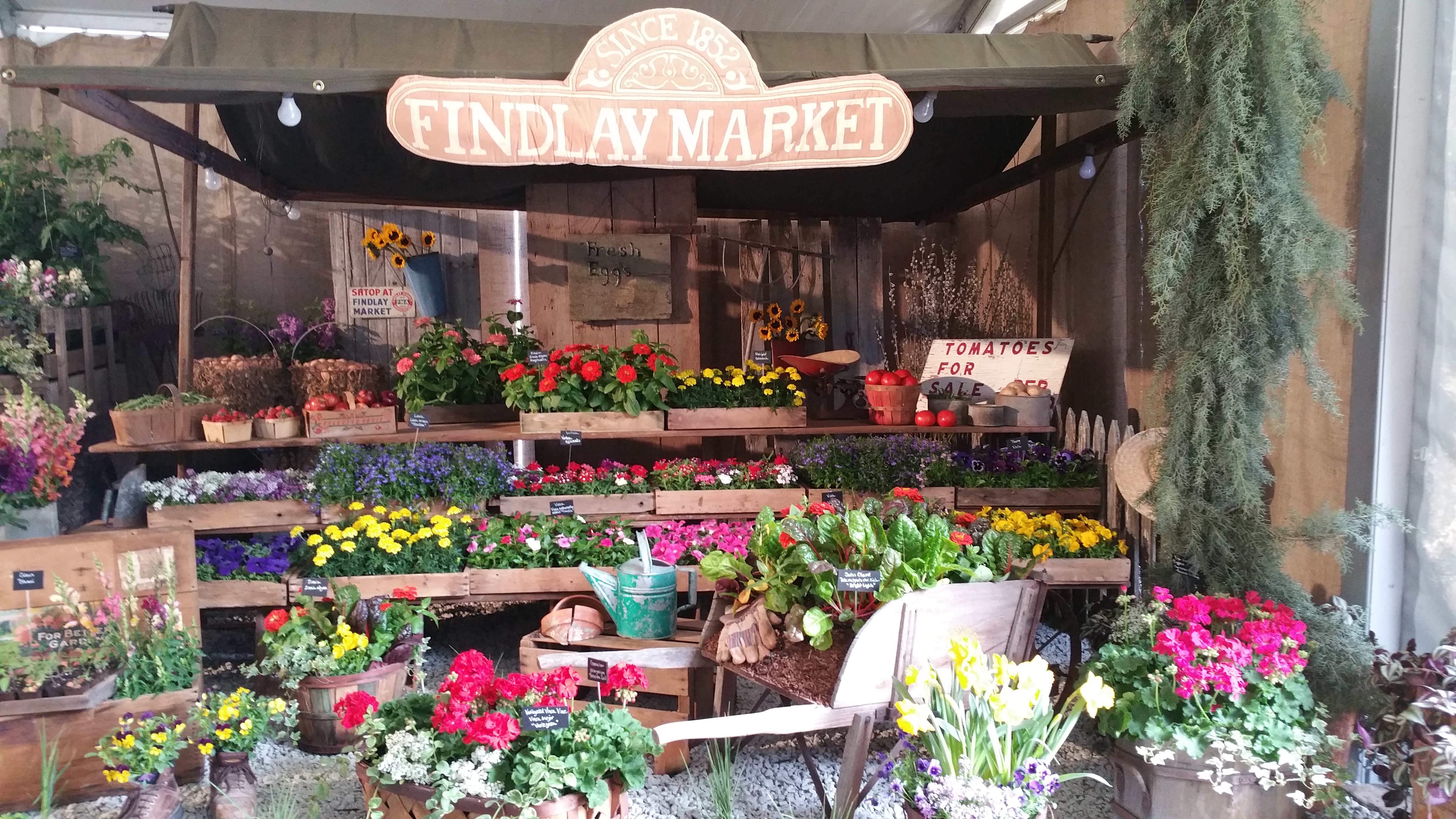
5. Pigs flying and otherwise can be found in all shapes and sizes, a natural for a city once nicknamed Porkopolis due to the number of slaughter houses. See if the kids can count all the pigs they see.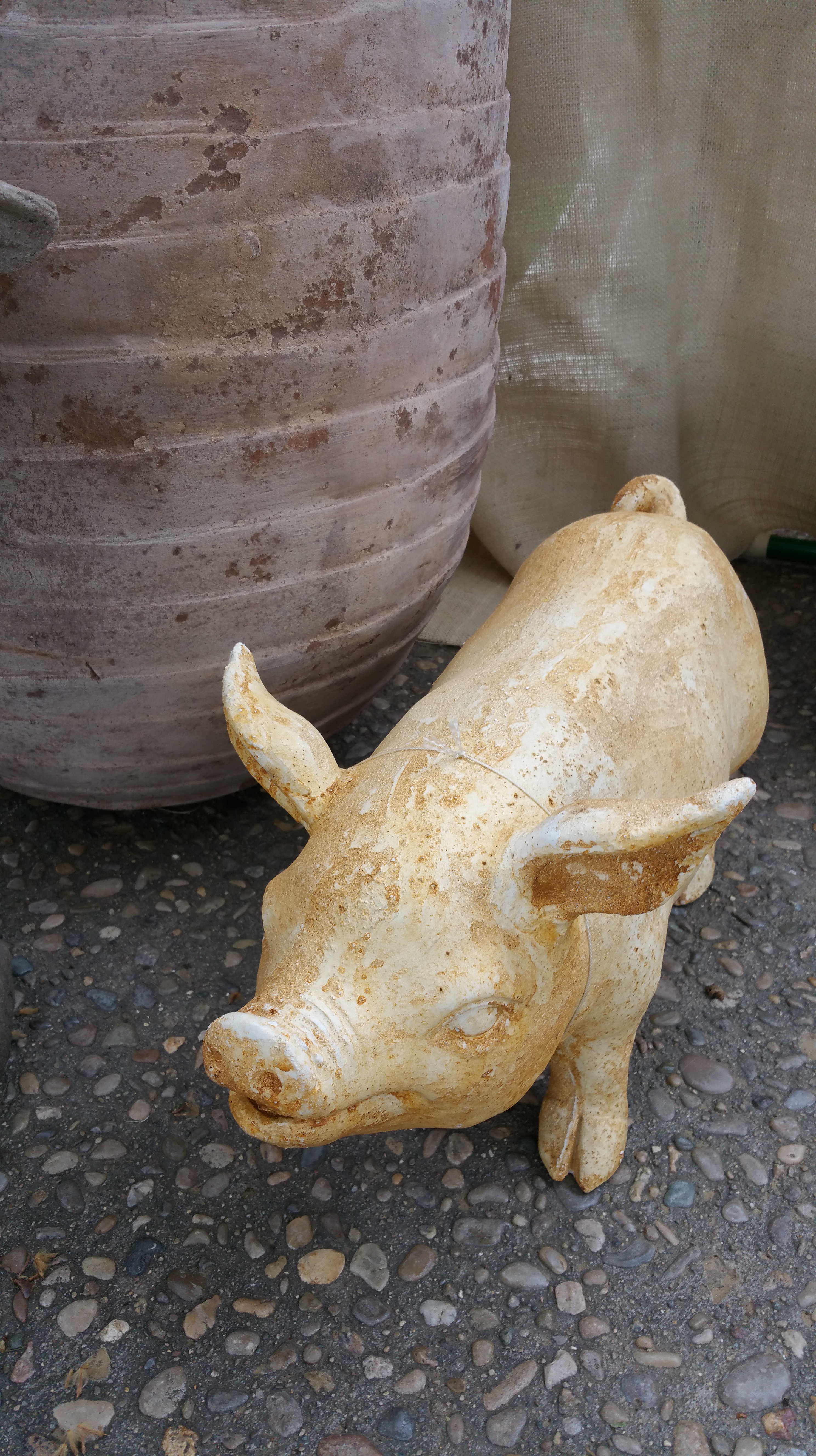
6. Children will find programs just for them and planting opportunities. There’s a display inspired by a rooftop garden at school near the heart of town.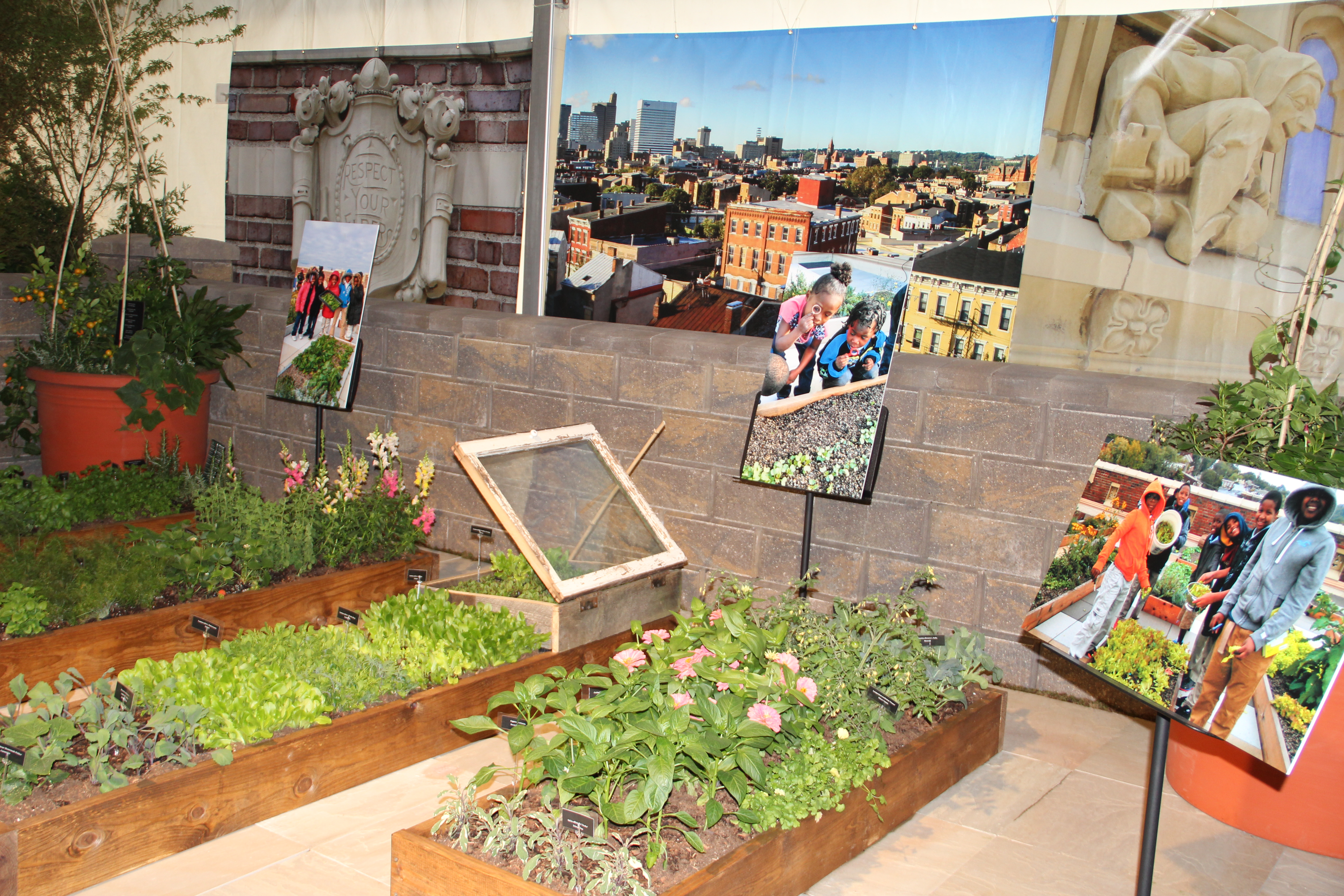
7. Plenty of learning opportunities with guest speakers including P. Allen Smith and Jon Carloftis.
8. Impossible to miss are really big containers of pink petunias hanging from poles and sitting atop posts. These plants, donated by Proven Winners, give the park a festive, party atmosphere.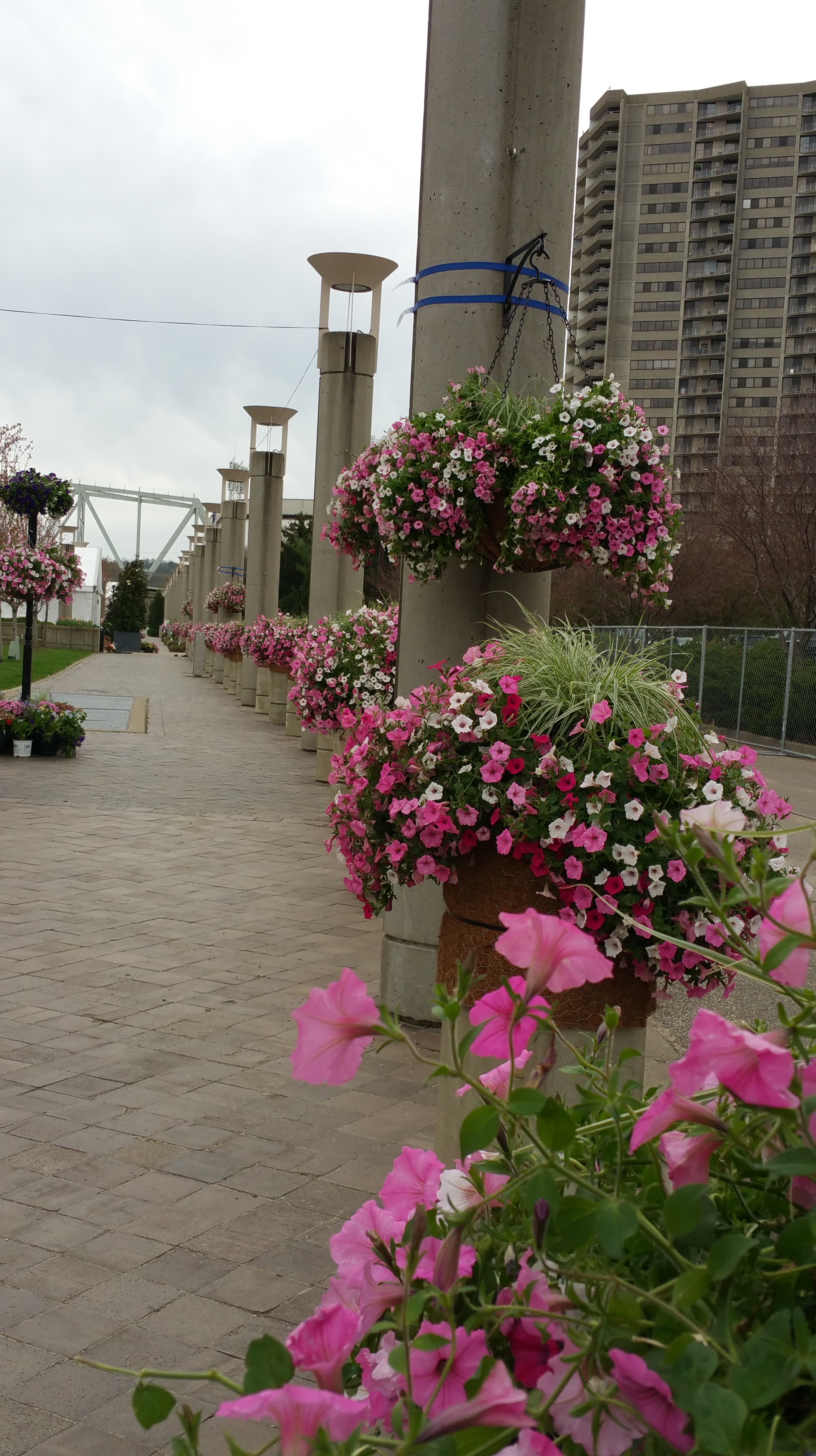
9. Inspiring garden ideas including our host’s own garden design.
10. A post-event plant sale
by GardenLover | Apr 14, 2015 | Favorite Flora
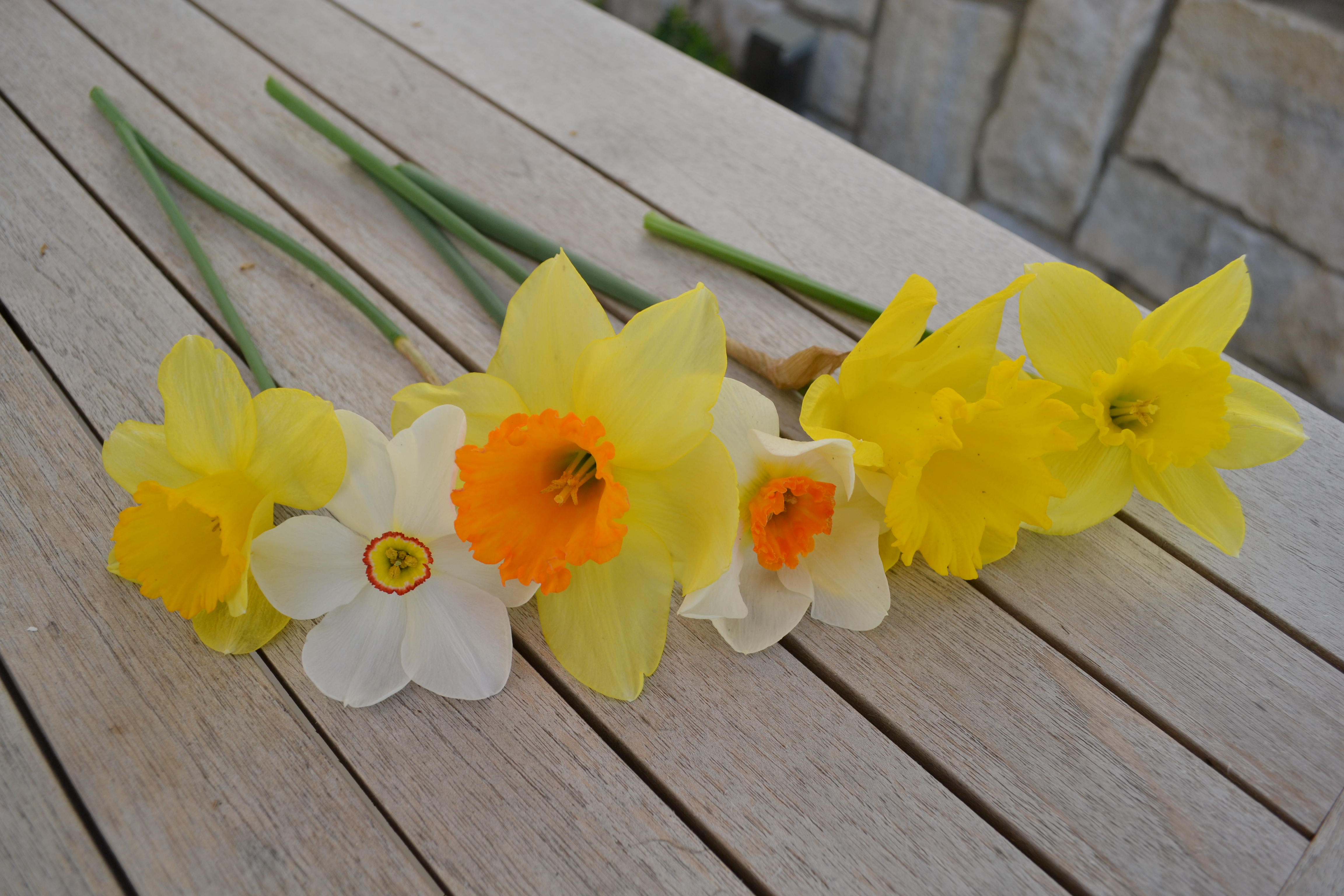
By Michael Leach
Easy-growing daffodils bring smiles of delight each spring. To ensure the best chances of success with these poet-inspiring flowers, we offer suggestions from the Buckeye Yard & Garden onLine produced online by Ohio State University Extension.
* While adaptable to a range of conditions, some places won’t work. If you have heavy shade, try early blooming varieties. If you have wet soil, don’t plan on daffs. Good drainage is essential.
* Apply bulb fertilizer in early spring as foliage begins to emerge. Too late for this year, but do this next if you like.
* Skip the folding, braiding and tormenting of foliage after flowers fade. The more leaf surface exposed to sunlight, the more food the bulb produces to power next year’s show. If fading foliage offends, interplant bulbs with perennials that will begin growing later in the spring and hide the yellowing daff leaves.
by GardenLover | Apr 13, 2015 | Snapshots
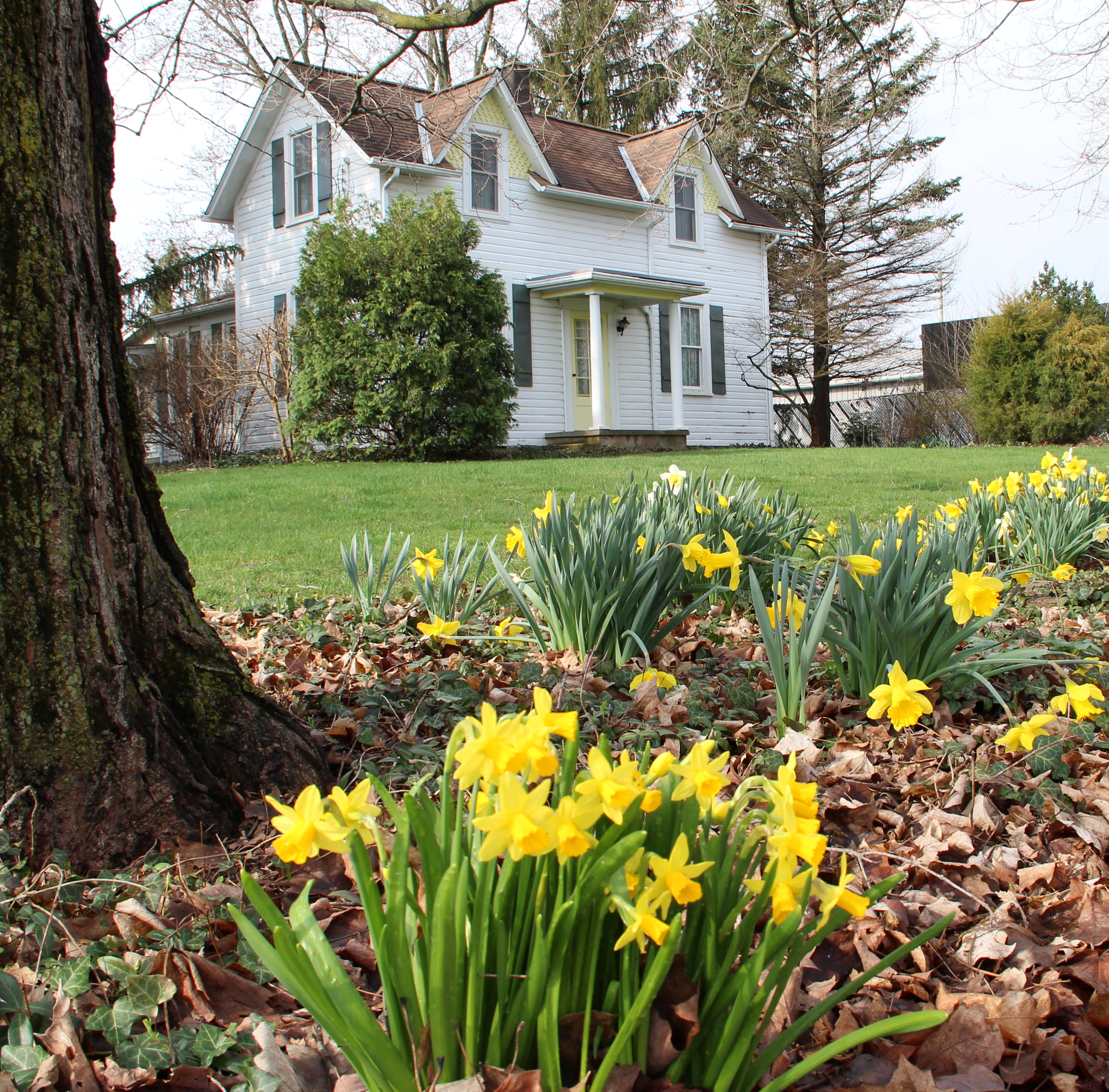 Hello, Yellow! Golden Daffodils and Trim Add Plenty of Curb Appeal
Hello, Yellow! Golden Daffodils and Trim Add Plenty of Curb Appeal
By Teresa Woodard
Our fellow blogger Michael Leach definitely has a green thumb, and his gardening efforts this month are showing some golden results! At his home southwest of Columbus, Michael planted hundreds of daffodils around the family farmhouse where he grew up as a child and returned in 1988 to make his own and transform the gardens. Check out these recent snapshots of his spring paradise.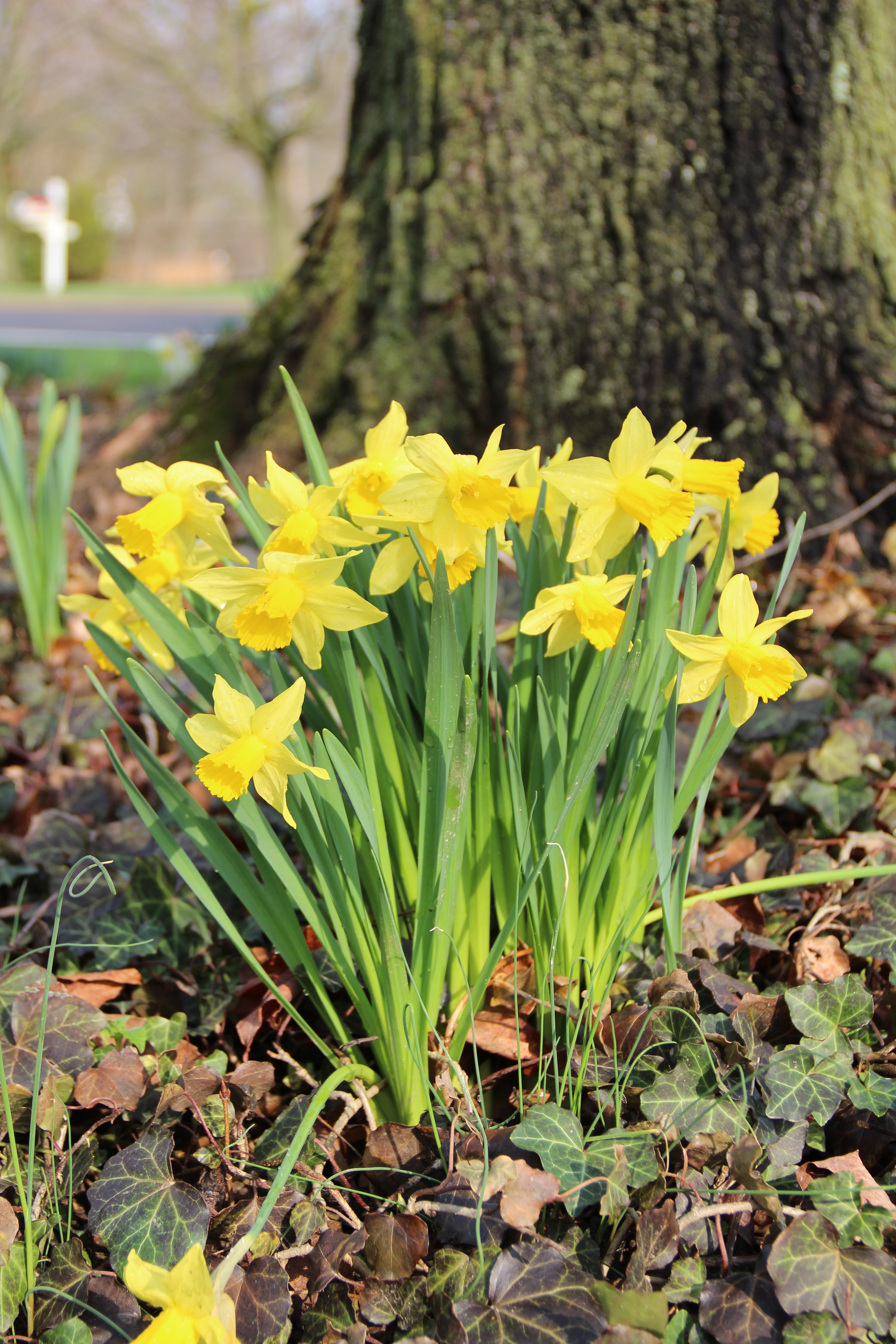
Century-old maple trees were planted by Michael’s uncles who built the home in 1890.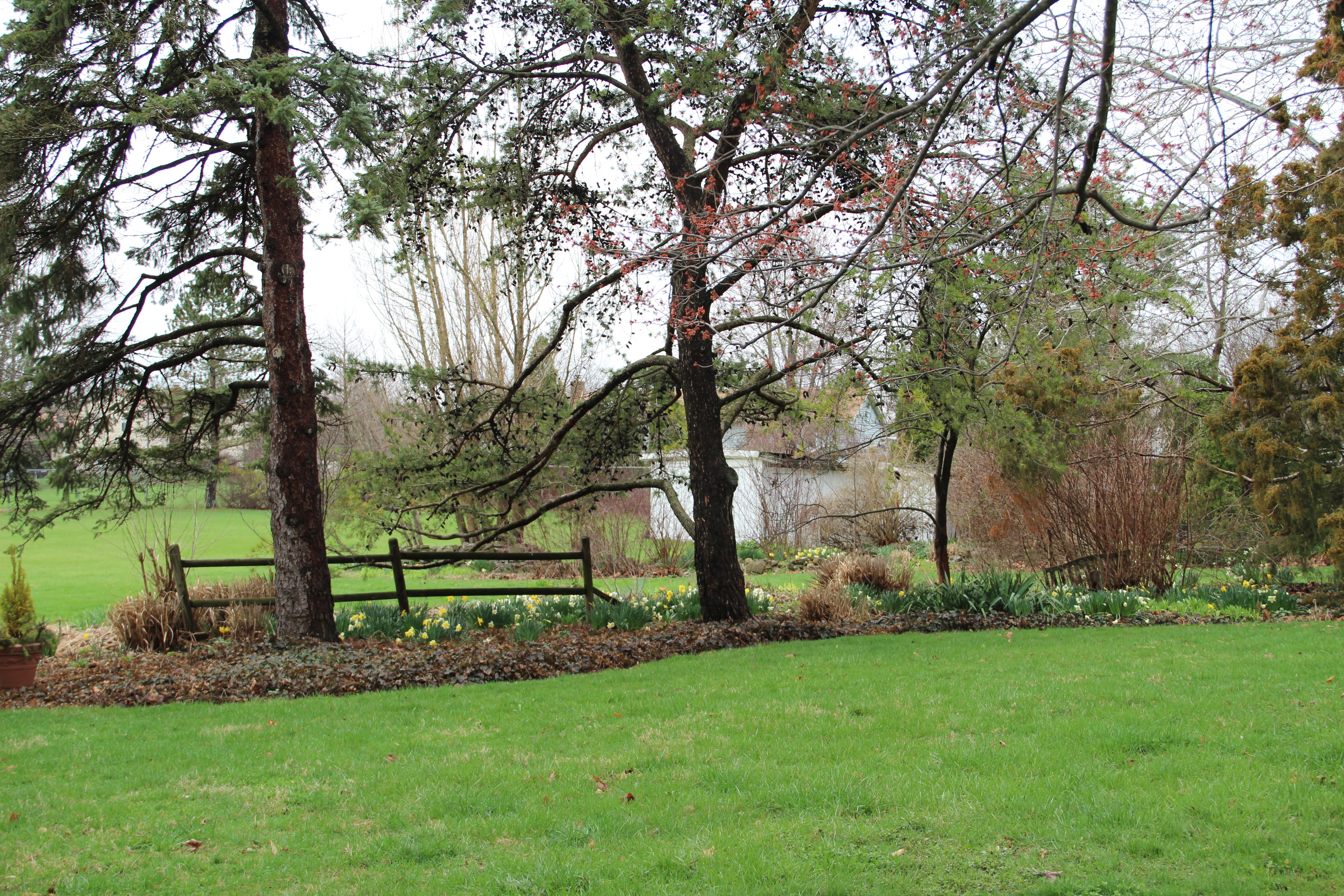 More daffodils frame the rear view of Michael’s property.
More daffodils frame the rear view of Michael’s property.
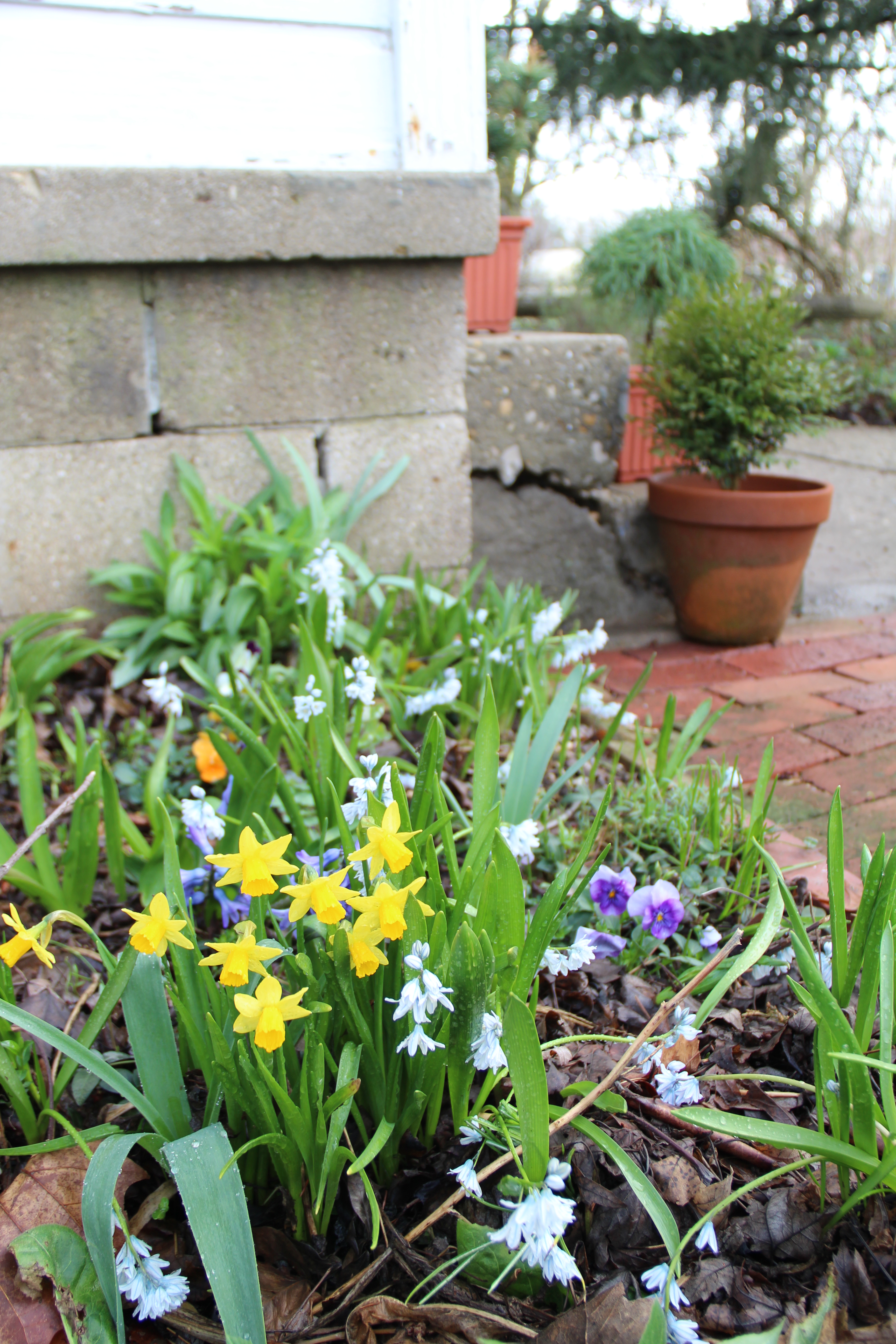 Michael creates many charming vignettes like this mix of bulbs at the back steps and a spring container arrangement at the yellow garage door.
Michael creates many charming vignettes like this mix of bulbs at the back steps and a spring container arrangement at the yellow garage door.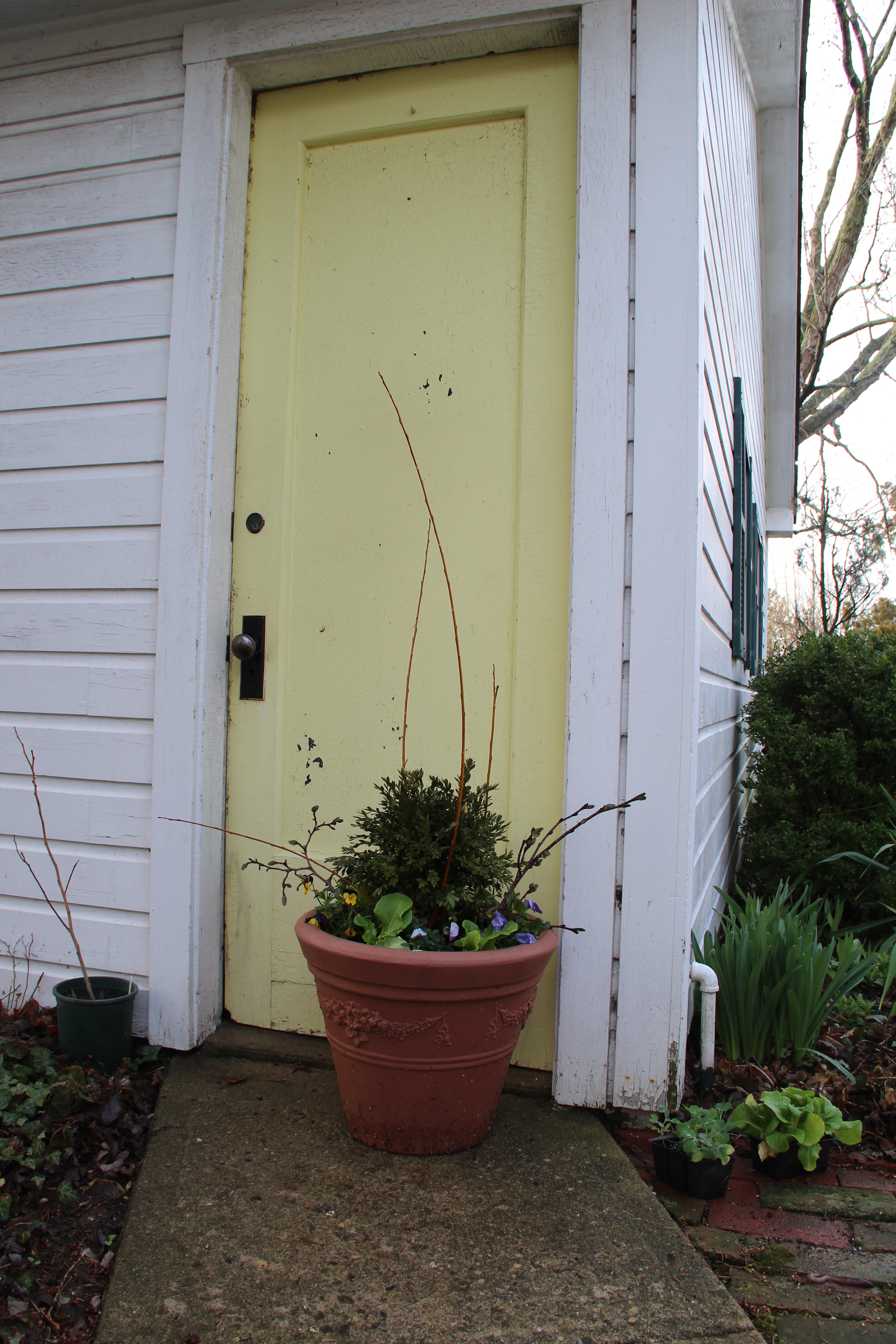
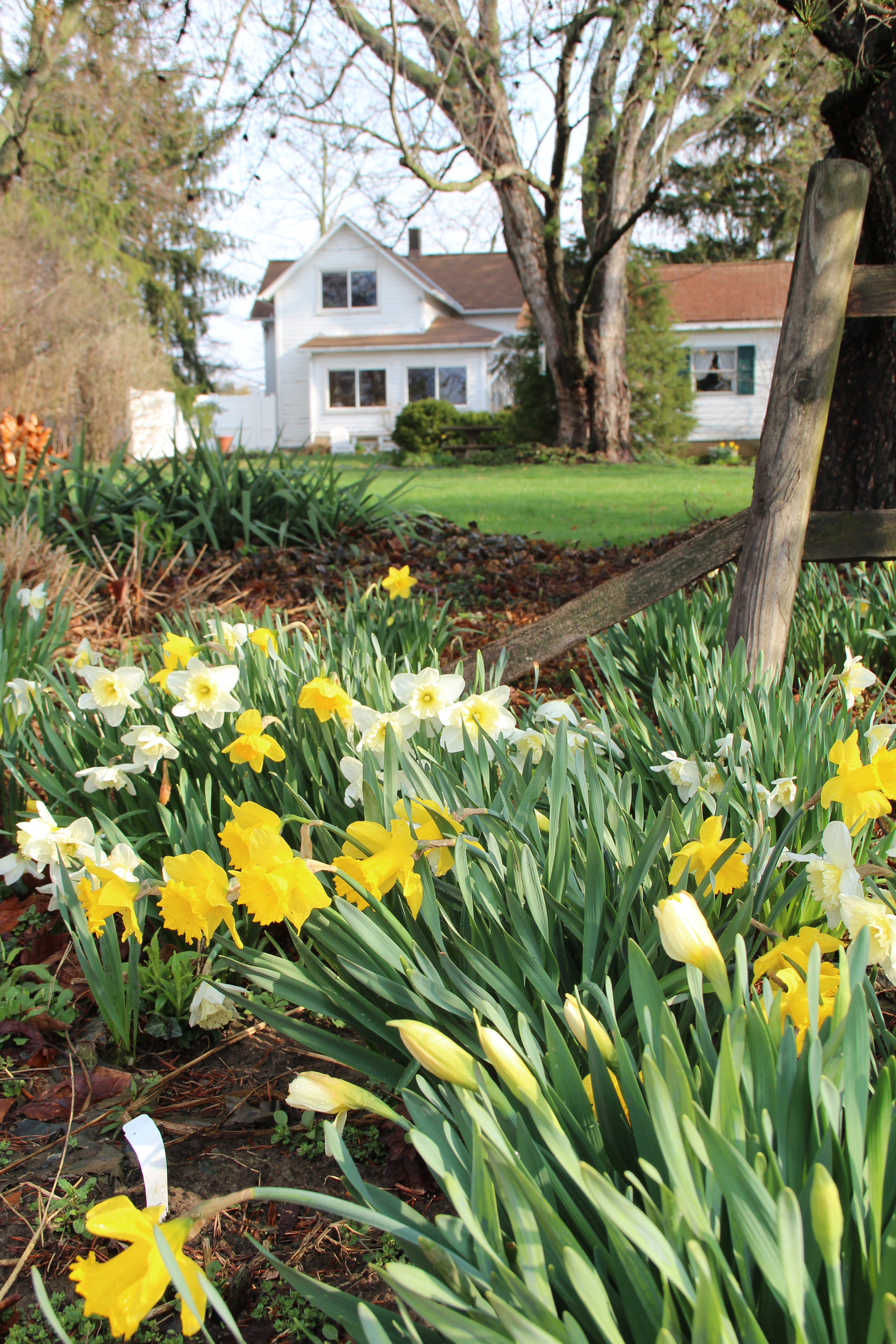 Rear view of home
Rear view of home
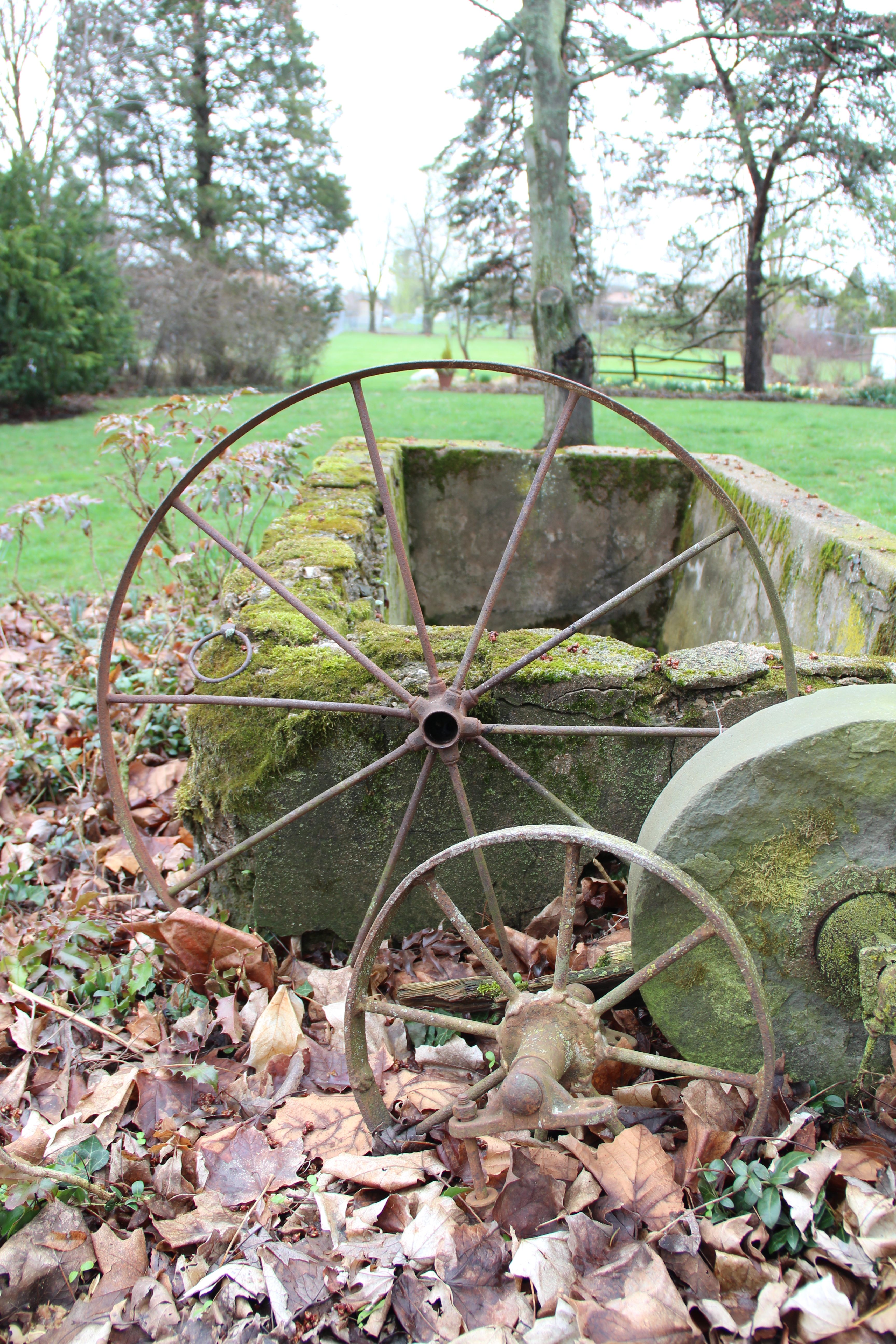 An original trough from the farmhouse
An original trough from the farmhouse
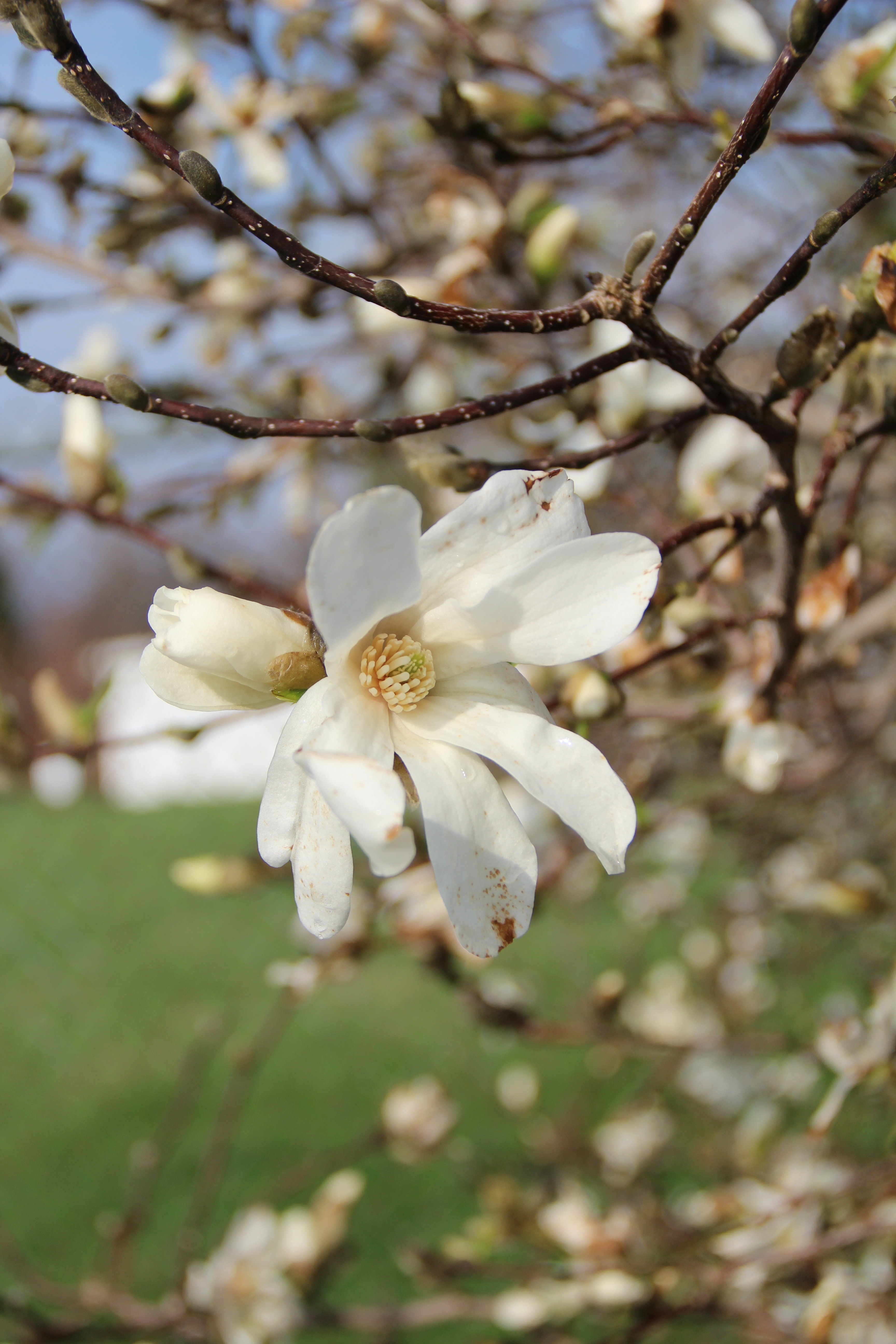
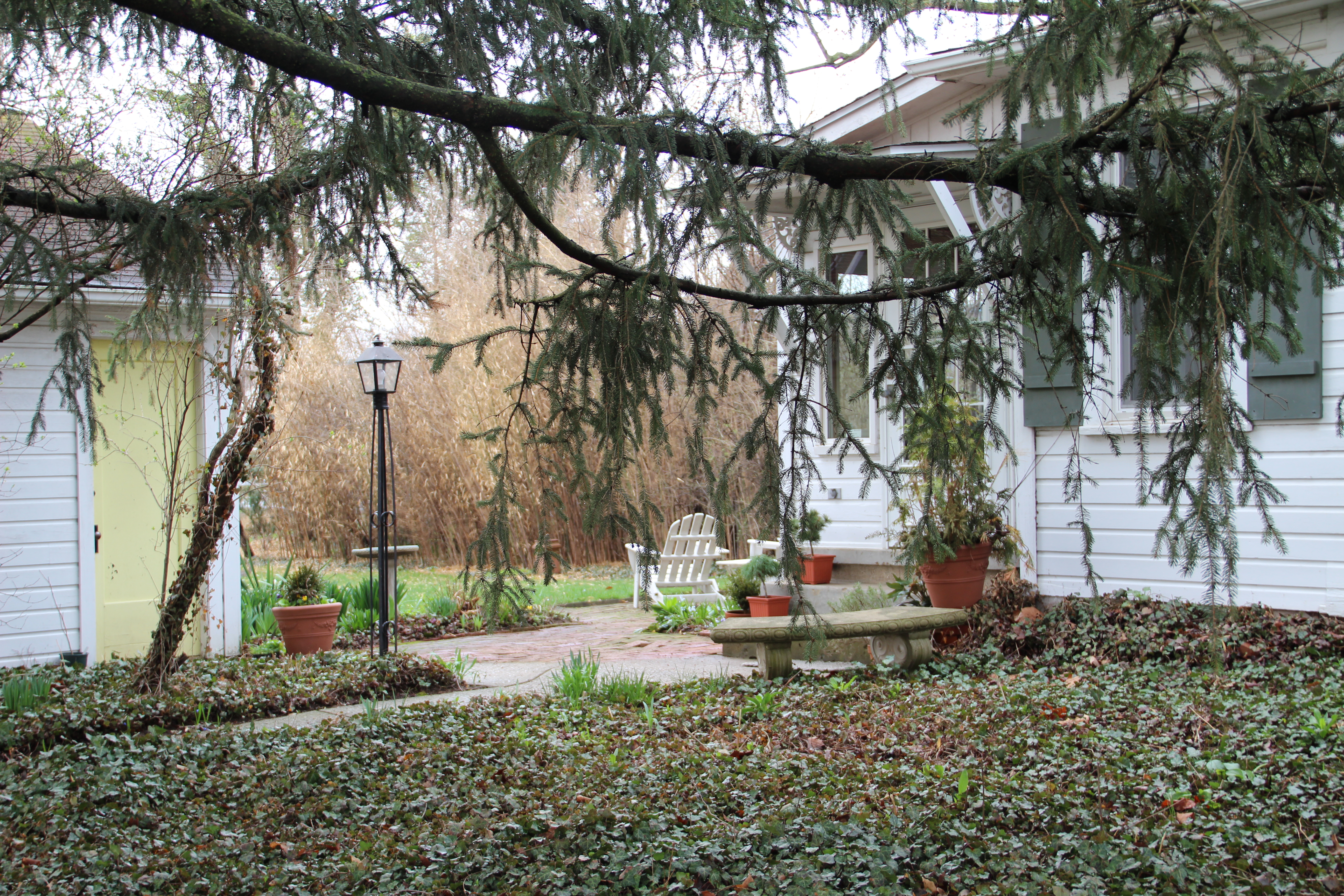 Side entry
Side entry
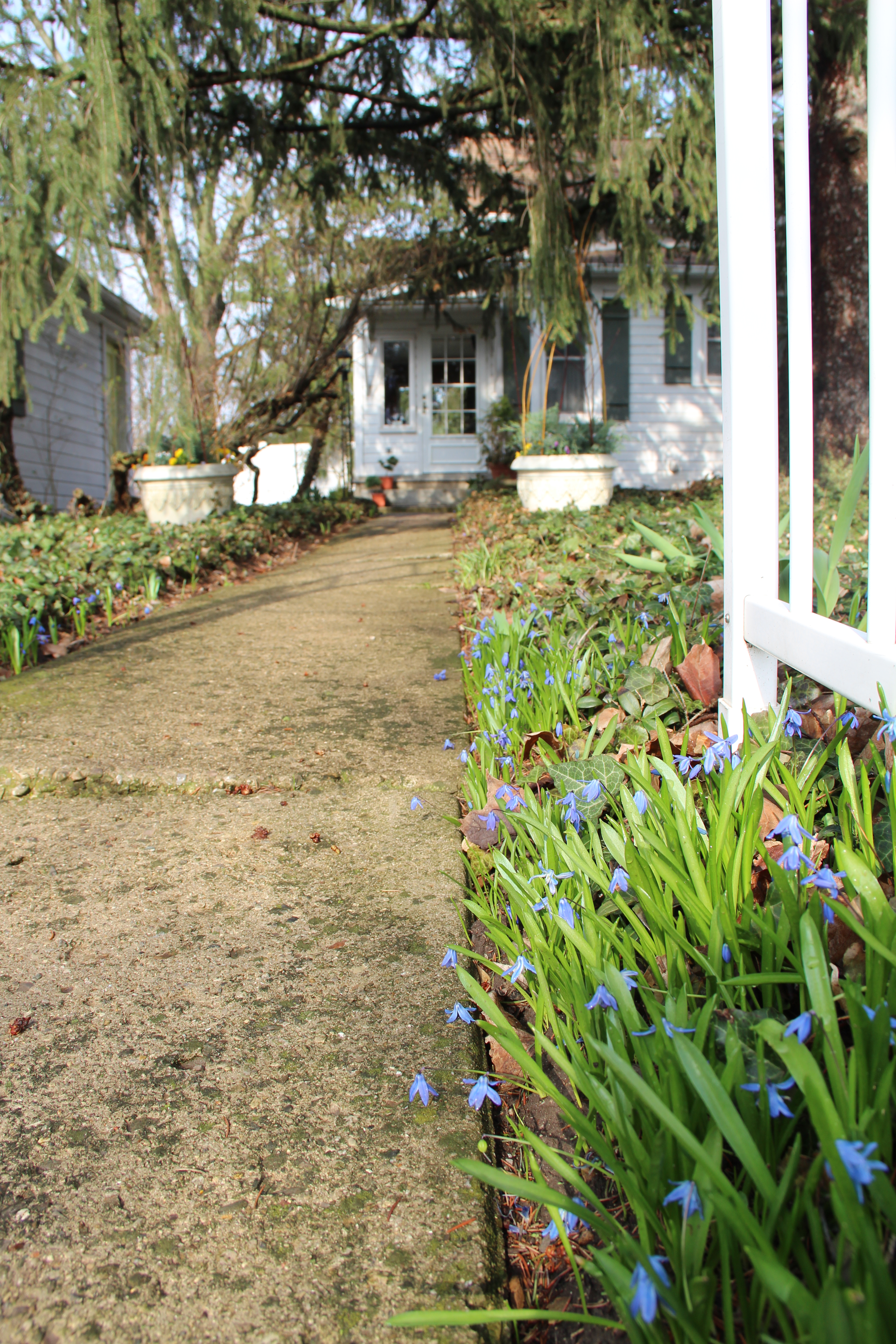 Side walkway
Side walkway
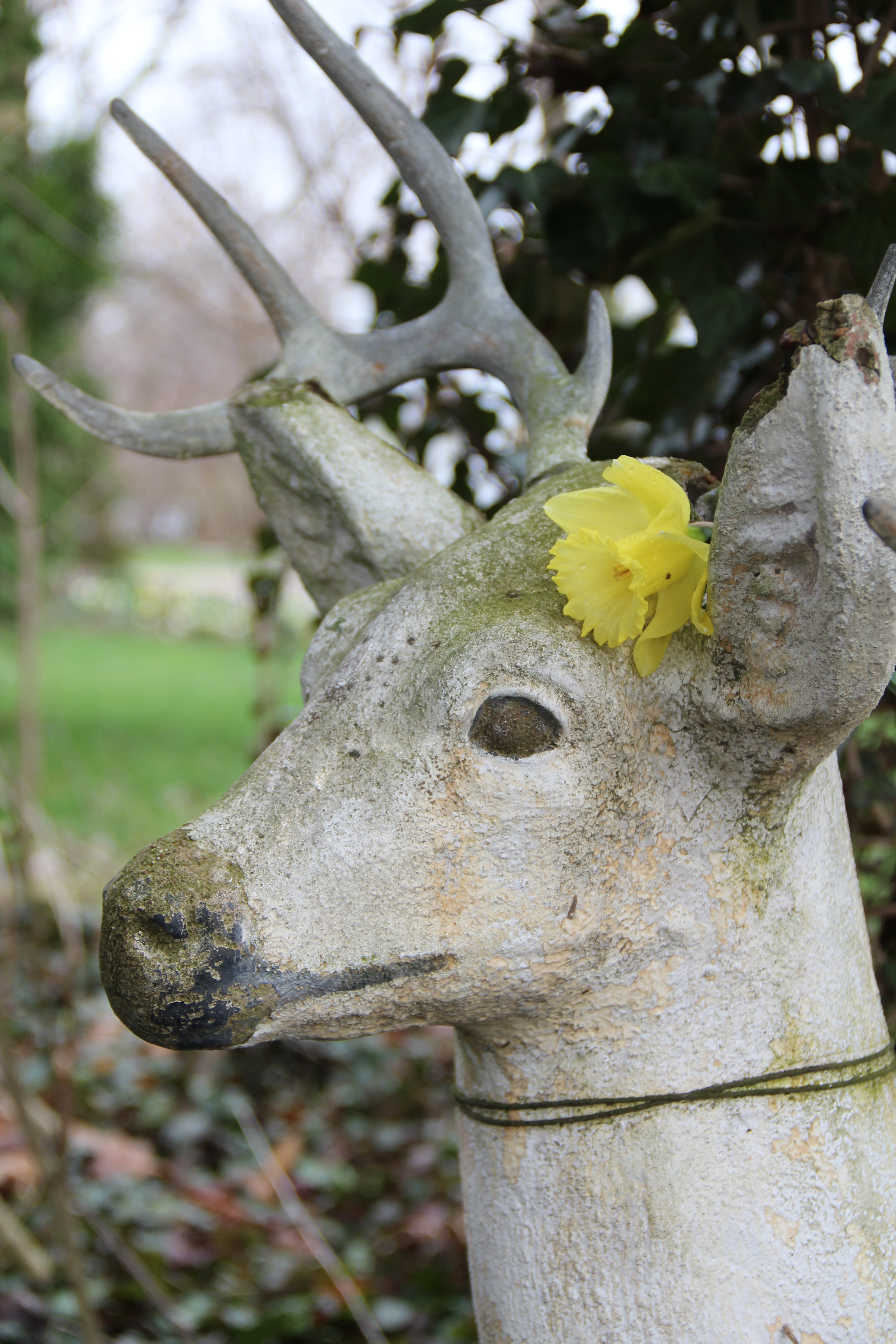 Thanks for sharing your garden, Michael!
Thanks for sharing your garden, Michael!
























